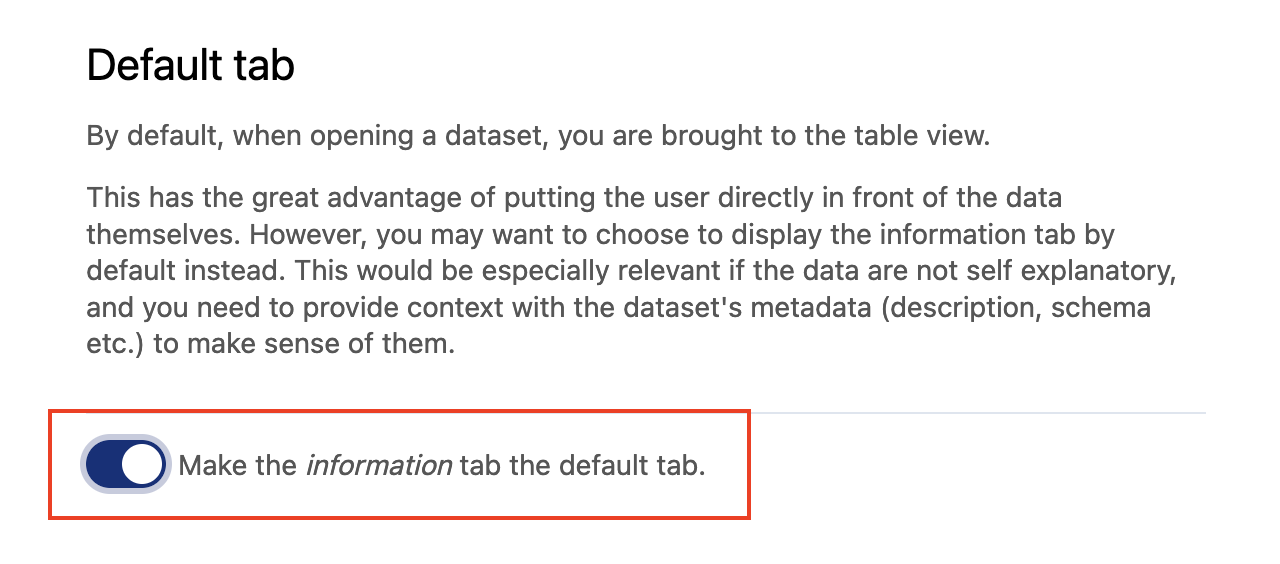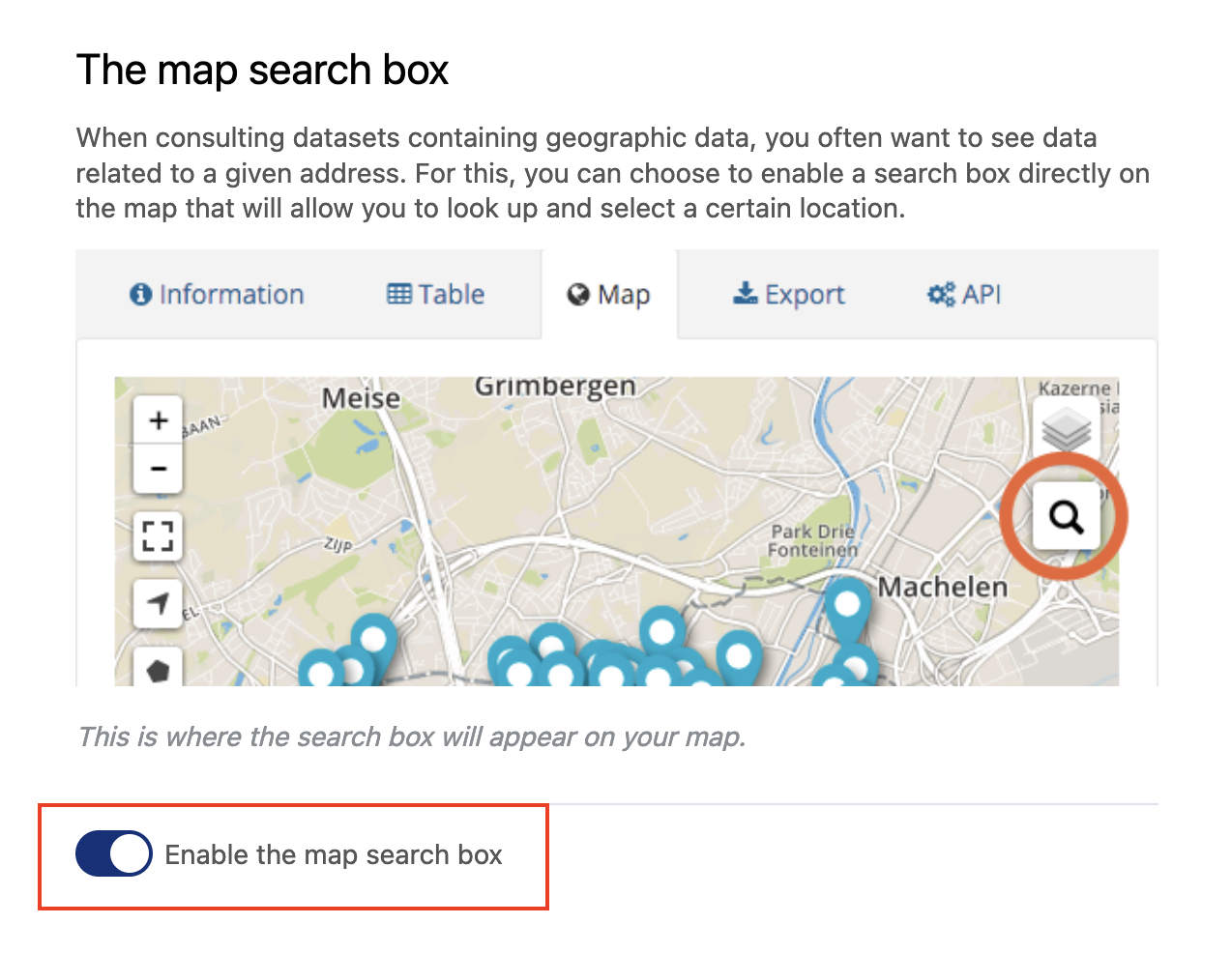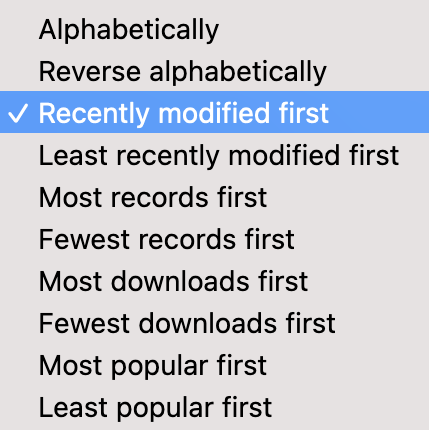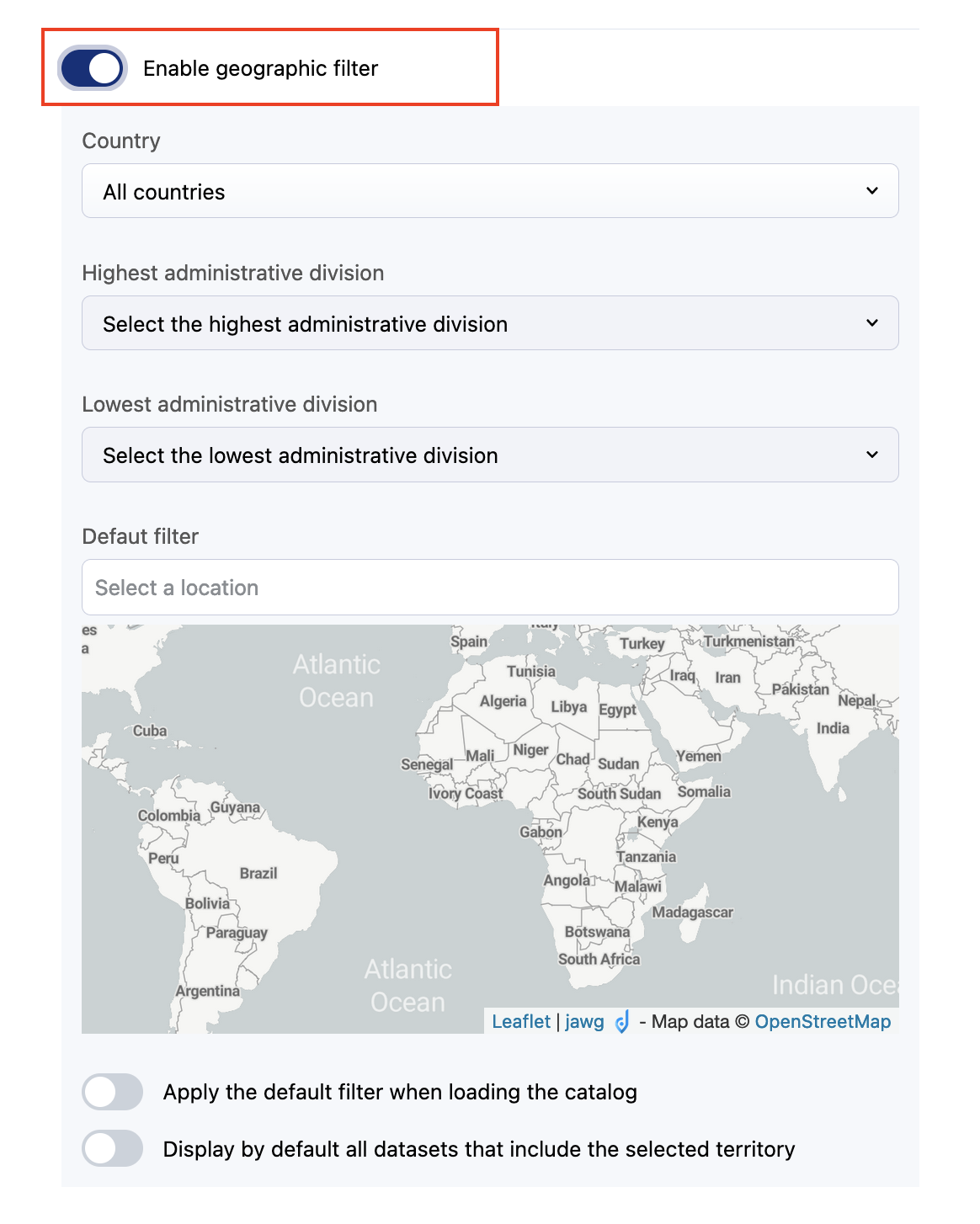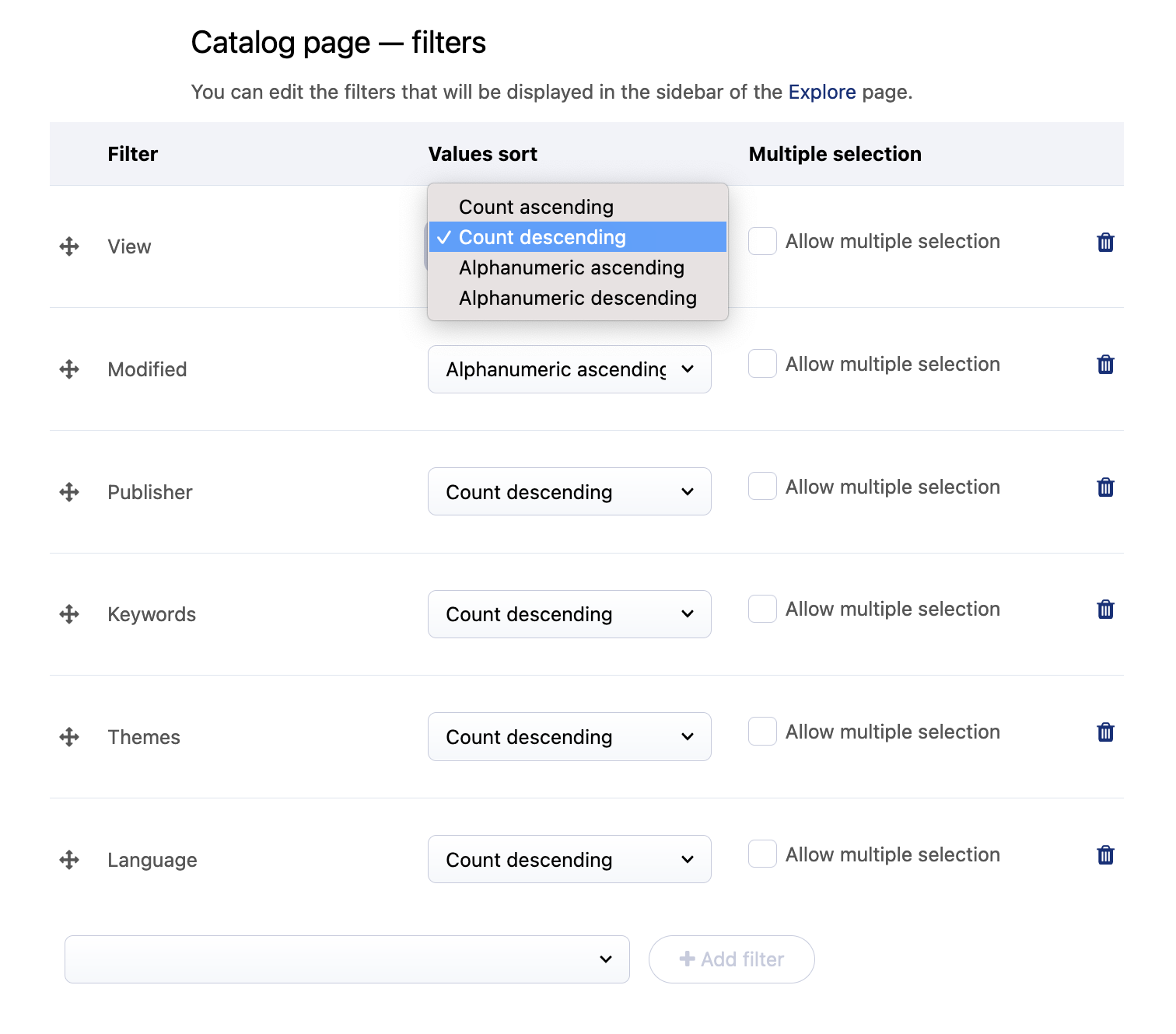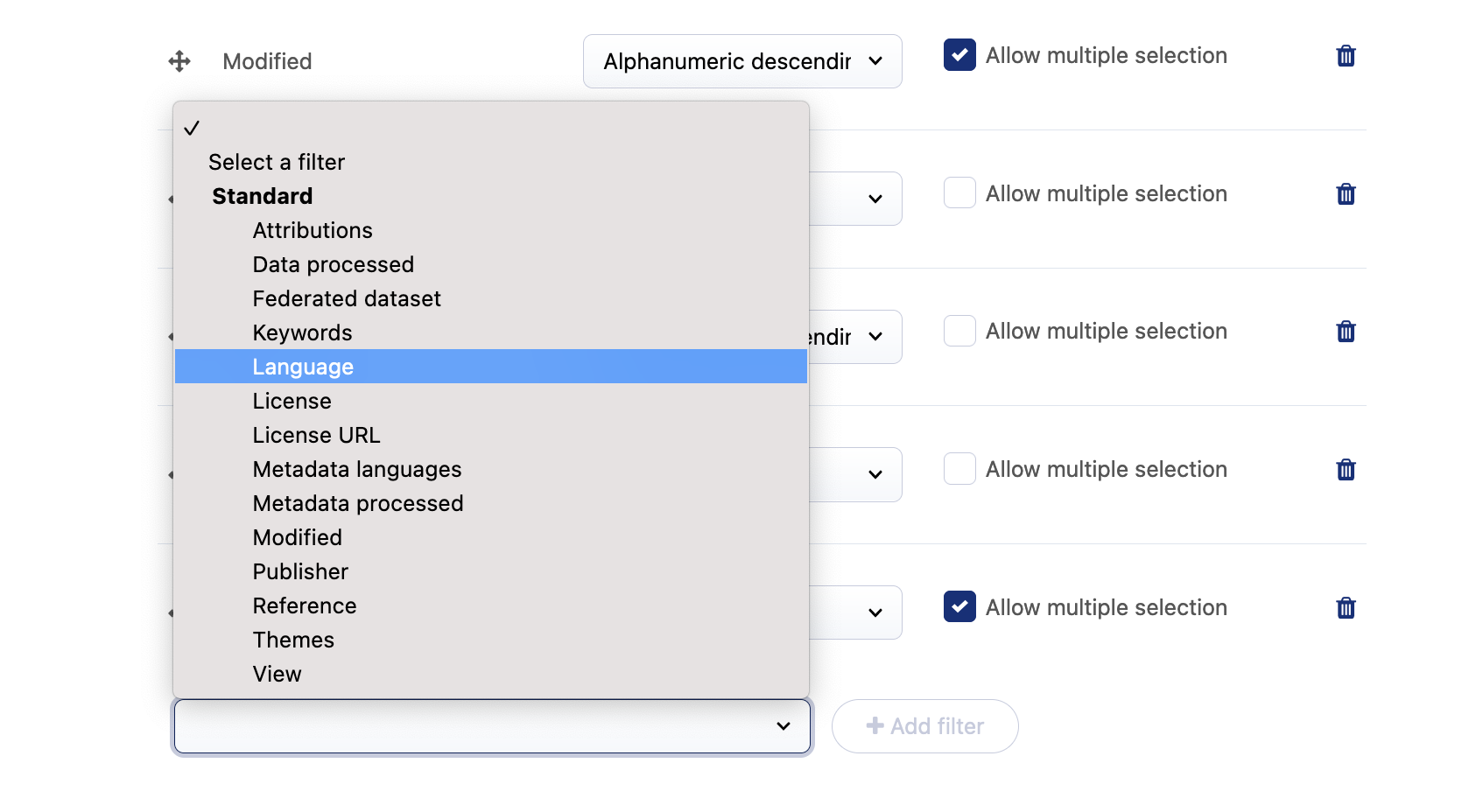Configure catalog and dataset pages
This section explains which features can be configured on the catalog and dataset pages.
Dataset 'view' tabs and default
By default, every dataset has a series of tabs that show the data in that dataset in a different manner.
Two of these tabs allow your users to do more than just browse the data: the analyze tab provides users with a chart building tool and the API tab offers a way retrieve and analyze the data outside of the interface. Both enable users to build their own analyses.
If you want to keep total control over the way your users browse the data, you can choose to disable these tabs.
Also by default, a dataset is opened on the table view, but you can choose to display the information tab instead. The table view by default is useful to give users direct access to the data, whereas the information tab by default is interesting to provide users with context and description first.
Map search box
By default, the map on the Map tab allows users to search for locations. You can toggle this option here.
Catalog page — sort options
By default, on your catalog page we rank your datasest byhow recently they were modified. You can modify this default behavior, and choose between: alphabetically or reverese alphabetically, the most or least recently modified datasets first, most or fewest records first, most or fewest downloads first, and finally most or least popular datasets first.
Catalog page — geographic filter
The geographic filter allows to search for datasets in the catalog based on the territory covered by the data they contain (see Filtering the catalog using the geographic filter). By default, this filter is not activated.
The geographic filter can either enable filtering across the entire world or only on a specific, chosen country.When the geographic filter is configured for a specific country, very precise refining is available through multiple available administrative divisions.When the geographic filter is configured for the entire world, users can filter the catalog with almost every country of the world, but most of the time, precise refining is not possible. For most countries, only the highest administrative divisions are available.
To activate and configure the geographic filter:
Click on the Enable geographic filter toggle button.
Choose for which country the geographic filter will be available, using the drop-down selection. To configure the geographic filter for the entire world, choose "All countries" and skip to step 3 of this procedure.
Choose the highest administrative division available in the geographic filter, using the drop-down selection.
Choose the lowest administrative division available in the geographic filter, using the drop-down selection. Users will be able to refine with administrative divisions comprised between the defined highest and lowest ones.
Define the default filter that will be used first when the geographic filter is activated.
(optional) Switch the "Apply the default filter when loading the catalog" toggle button for the default filter to be automatically activated and applied on the catalog at loading.
(optional) Switch the "Display by default all datasets that include the selected territory" toggle button for all datasets related to a chosen territory to be displayed by default.
Click on the Save button in the top right corner.
Catalog page — filters
The filters in the sidebar of your catalog page have a default configuration. But you can easily modify which are present, in what order they appear, and how they behave. By default, all of the filters are in descending order by the number of corresponding datasets, except "Modified," which is in "alphanumeric ascending."
In short, you can order them by the number of datasets, or else alphabetically. Note that you can also allow for multiple values to be selected.
Note also that you can add additional filters at the bottom. These include:Attributions, data processed, federated datasets, keywords, language, license, license URL, metadata languages, metadata processed, modified, publisher, reference, themes, and view.


